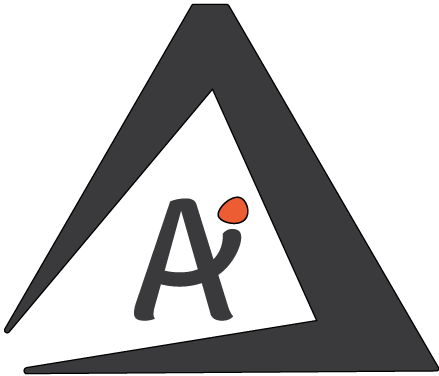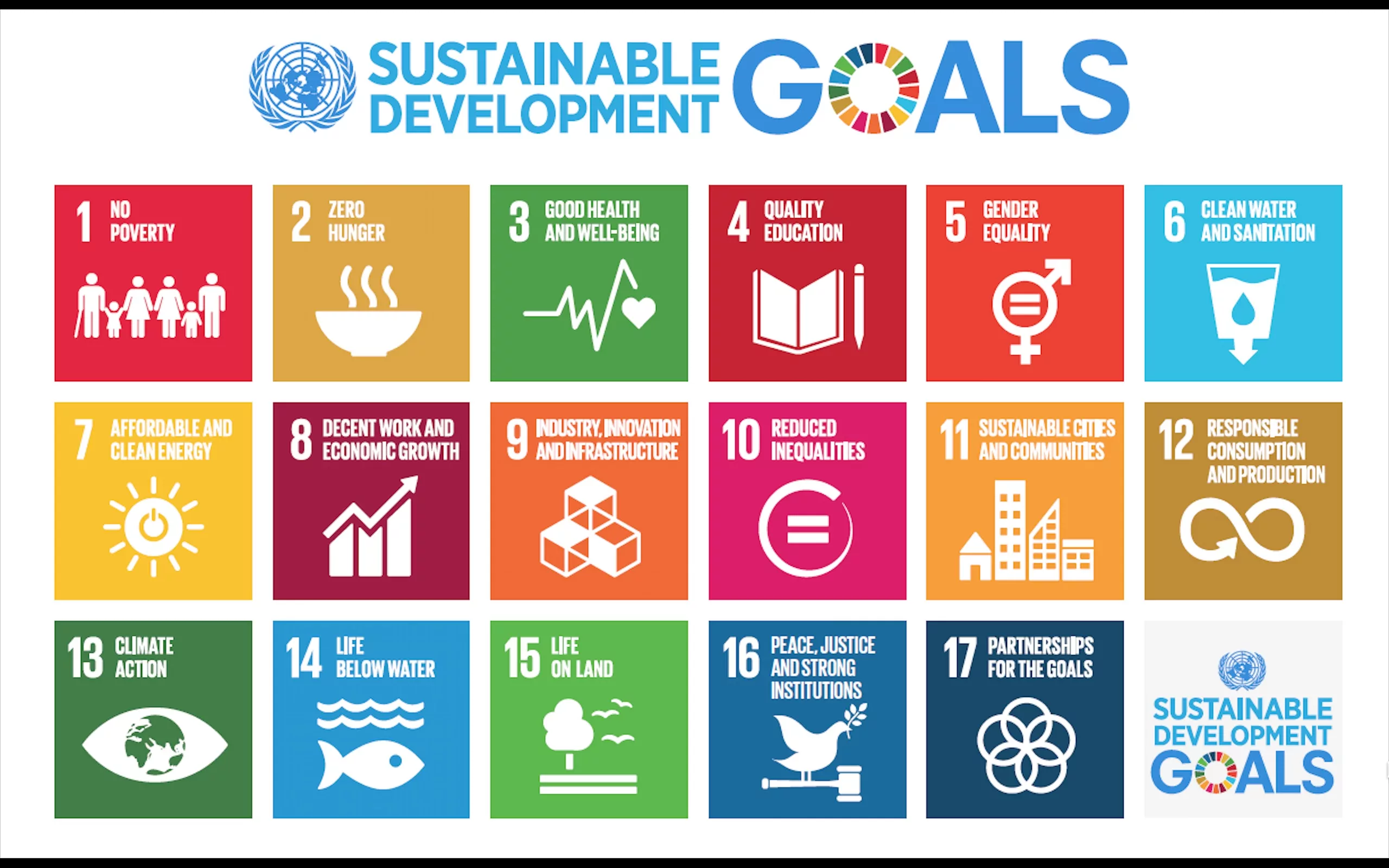Sustainable Development Goals Glossary Class 10
| What is SDG? | Ai Impact on SDG | What is MDG? |
| Why SDG ? | Direct Impact | Kyoto Protocol |
| History of SDG | Indirect Impact | Name of SDGs |
| UNDP | Goal of SDGs | Rio+ 20 |
The Sustainable Development Goals (SDGs), also known as the Global Goals, are a universal call to action to end poverty, protect the environment, reduce economic inequality and ensure peace and justice for all.
On 25 September 2015. 193 countries of the UN General Assembly adopted the 2030 Development Agenda titled Transforming our world: the 2030 Agenda for Sustainable Development.
Why SDG ?
able to be maintained at a certain rate or level for a long period of time.
To use natural resources and energy in such a way that it remains to conserve for future generations is called Sustainable Development.
The objective was to produce a set of universal goals that meet the urgent environmental, political, and economic challenges facing our world.
For example, Natural resource like coal takes a long time to get refreshed.
So basically, there are three pillars of sustainable development—economic, social, and environmental.
Earlier there were Millennium Development Goals (MDGs) assigned by the UN in September 2000, which has to be completed in 2015 but it failed due to certain reasons.
Why MDG’s failed ?
MDGs failed because they were:
- Unrealistic Goals
- Only considering Devolving Nations
- Weak Governance
- Mismanagement
- Less Targets
- Lack of Effectiveness
- Lack of Transparency
SDG is also known as Global Goals as it has to be achieved by all UN Members.
Name of 17 SDGs
- Goal 1: No Poverty
- Goal 2: Zero Hunger
- Goal 3: Good Health and Well-being
- Goal 4: Quality Education
- Goal 5: Gender Equality
- Goal 6: Clean Water and Sanitation
- Goal 7: Affordable and Clean Energy
- Goal 8: Decent Work and Economic Growth
- Goal 9: Industry, Innovation and Infrastructure
- Goal 10: Reduce Inequality
- Goal 11: Sustainable Cities and Communities
- Goal 12: Responsible Consumption and Production
- Goal 13: Climate Action
- Goal 14: Life Below Water
- Goal 15: Life on Land
- Goal 16: Peace and Justice Strong Institutions
- Goal 17: Partnership To Achieve Goal
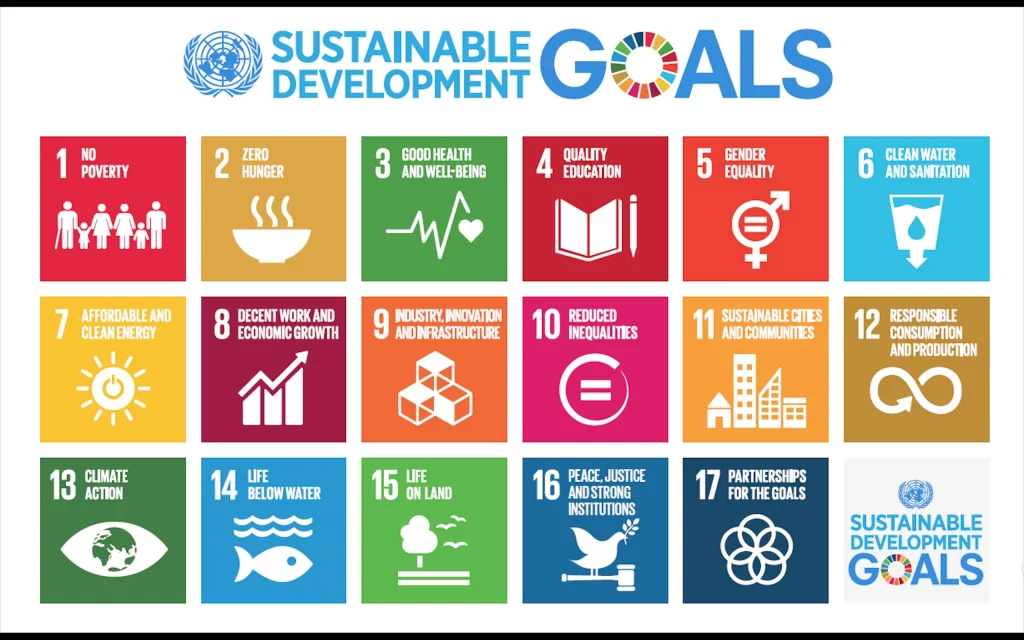
Brief History of SDGs
In 1992 there was an earth summit in the Brazilian city of Rio De Janeiro. After 20 years of this earth summit, again there was an earth summit named Rio + 20. In this summit, the foundational steps were taken towards sustainable development.
The United Nations Conference on Environment and Development in Rio de Janeiro is also known as Earth Summit.
The objective was to produce a set of universal goals that meet the urgent environmental, political and economic challenges facing our world.
In Rio + 20 it has been decided that the time limit of the Kyoto Protocol will be increased till 2020, and further plains will be discussed in 2015.
What is Kyoto Protocol?
- Signed: 11 Dec 1997 in, Kyoto Japan
- Purpose: Reduce in Green House Gas Emission
- Effective: 16 Feb 2005
- Expiration: Not Decided (Has to be expired in 31 Dec 2012 but increased till 2020)
On 25 September 2015, a resolution named 70/1 was passed in UN and is called “A new Development Agenda” ie, Transforming our world. That year the time period of MDGs also get over on 25 December and after that SDG was adopted.
SDGs of 2030 Agenda came into effect on 1 January 2016. Implementation of SDGs is described as “Localizing The SDGs to Highlight the Role of Local Institutions & Local Actor”.
This New Development gathered all the factors of SDGs together. What are Economic Growth, Social Inclusion, and Environmental Protection?
The 17 SDGs are integrated: that means the impact or action one SDG can be seen on others, and that the development must be balanced, social, economic, and environmentally sustainable.
pledged to mobilize financing, enhance national implementation and strengthen institutions to achieve the Goals by the target date of 2030, leaving no one behind.
Role of UNDP in SDGs
The SDGs were set by the UN but the responsibility to implement them was in another body named UNDP. UNDP provides support to governments to integrate the SDGs into their national development plans and policies.
United Nation Development Programme (UNDP) is under the UN and made to implement the SDGs.
What is UNDP?
UNDP is the lead body of the UN and is responsible to help and implement the goals in some 170 countries and territories.
In Today’s world, it is nearly impossible to handle complex challenges alone from stopping the spread of disease to preventing conflict. For Example Corona Virus. Every country is dealing with it.
UNDP basically builds a platform where countries can help each other.
Achieving the SDGs requires the partnership of governments, the private sector, civil society, and citizens alike to make sure we leave a better planet for future generations!

Goals of SDGs
Targets Of SDGs
| 1. Zero Poverty: | The countries will bring poverty to zero, which means they will end it. |
| 2. Zero Hunger: | The countries will end the hunger. |
| 3. Good Health & Well Being: | Provide every citizen of every country with these assets. |
| 4. Quality Education: | The investment will be made in education to improve its quality. |
| 5. Gender Equality: | Ending the discrimination in different genders. |
| 6. Clean Water And Sanitation: | Access to clean water and proper hygiene for all. |
| 7. Affordable and Clean Energy: | The cost of energy (eg: Electricity) will be brought down without causing any environmental effects. |
| 8. Decent Work and Economic effect: | Finding ways to reduce work while boosting the economy. |
| 9. Industry, Innovation, and Infrastructure: | To build sustainable industries, support Innovations, and improve infrastructure. |
| 10. Reduce Inequalities: | Reducing the inequalities within and among the countries. |
| 11. Sustainable Cities & Communities | Developing Cities, upgrading communities, and removing slum settlements by ensuring that they are sustainable. |
| 12. Responsible Consumption and Production | Limiting our consumption and increasing production so that the natural resources can be sustained. |
| 13. Climate Action | Reducing greenhouse gas emersion and taking positive actions towards climate change. |
| 14. Life Below Water | Taking care of our marine world. |
| 15. Life On land | Protect our ecosystem. |
| 16. Peace Justice and Strong Institutions | Providing peaceful societies, ensuring justice, and building strong institutions at all levels. |
| 17. Partnerships For Goals | Helping each other to reach the goals at both national and international levels. |
AI Impact On SDGs
AI4Good aims to use Artificial Intelligence to achieve SDGs Goals faster till the end of 2030.
Direct Impacts Of Ai on SDGs
Ai-based technologies can directly impact these SDGs goals.
High Impact
1. Decent Work and Economic Growth (SDGs-8).
Ai can be trained to reduce the work of humans and boost the world economy.
2. Industry, innovation, and Infrastructure (SDG-9).
Ai is the newest technology it can provide the solution for innovations, also Ai has a large impact on Industry as it can perform their daily-task more efficiently.
Medium Impact
1. Good health and Well-being (SDG-3).
2. Quality Education (SDG-4).
3. Sustainable Cities and Communities (SDG-11).
4. Peace, Justice, and Strong Institutions (SDG-16).
Minor Impact
1. Gender Equality (SDG-5).
2. Reduced Inequality (SDG-10).
3. Climate Action (SDG-13).
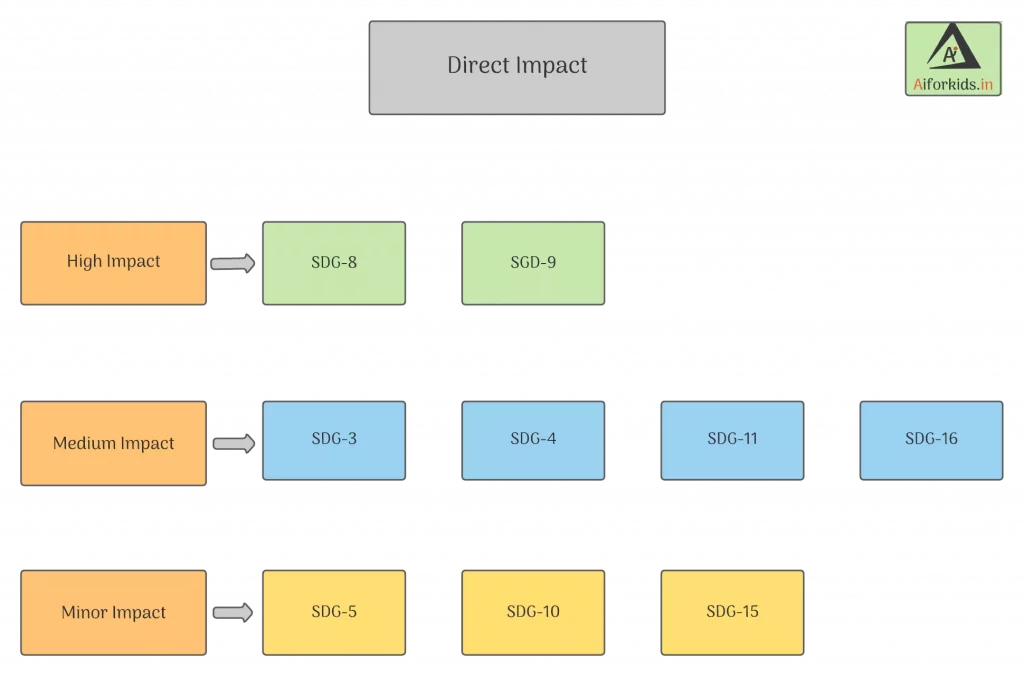
Indirect Direct Impacts Of Ai on SDGs
These SDGs are affected indirectly by AI
High Impact
1. No Poverty (SDG-1): Ai Sector will produce new employment for people, thus providing them with salaries and ending poverty.
2. Zero Hunger (SDG-2): Ai can provide more accurate data of the places affected by hunger which can be used to help them (eg. Food Distribution).
3. Responsible Production and Consumption (SDG-12): Ai is a high yield technology which means it can give a huge production without taking much consumption.
Minor Impact
1. Clean Water and Sanitation (SDG-6).
2. Affordable and Clean Energy (SDG-7).
3. Life below Water (SDG-14).
4. Life on Land (SDG-15).
5. Partnership for Goals (SDG-17).
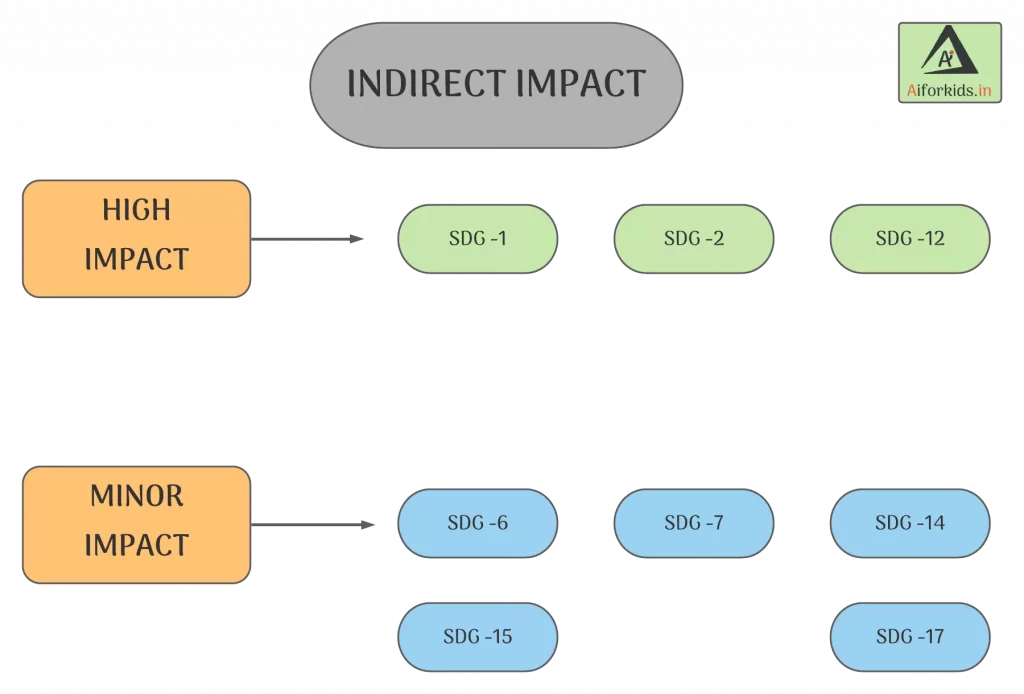
Video On SDGs
Source: UNICEF Georgia
Fair use of copyright law includes commentary, search engines, criticism, parody, news reporting, research, and scholarship.
Questions/Answers on SDGs
Aks your Doubts from here: Ask Aiforkids.
Open Questions of SDG from here: SDG Q/A.
